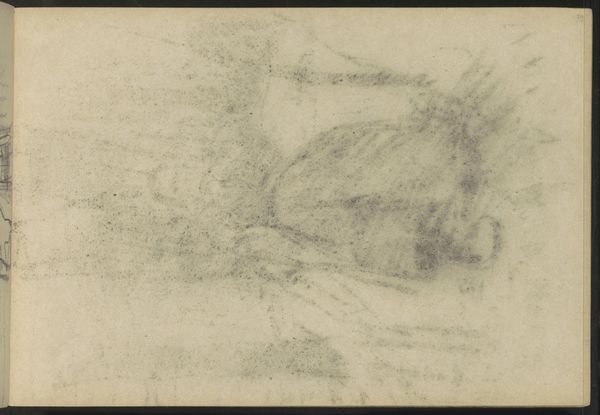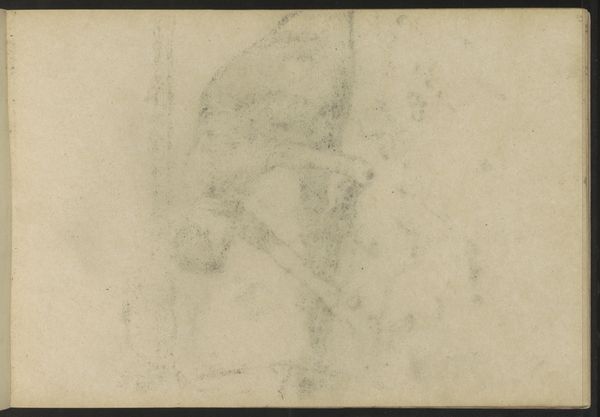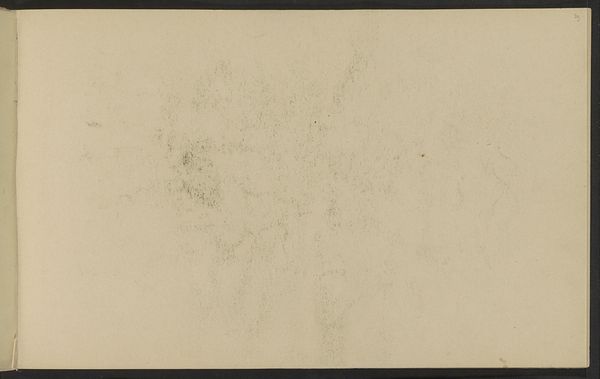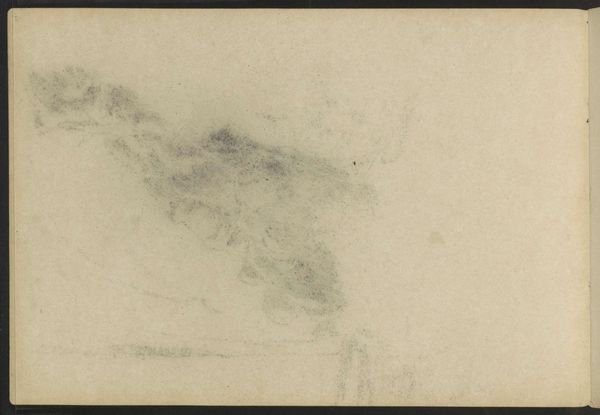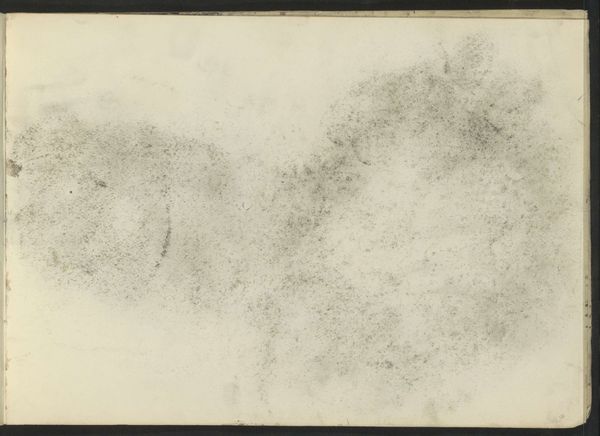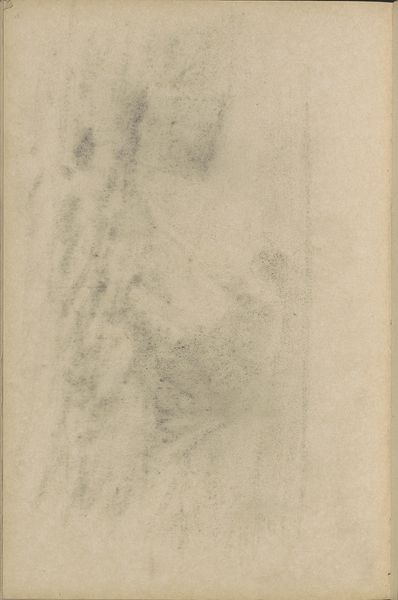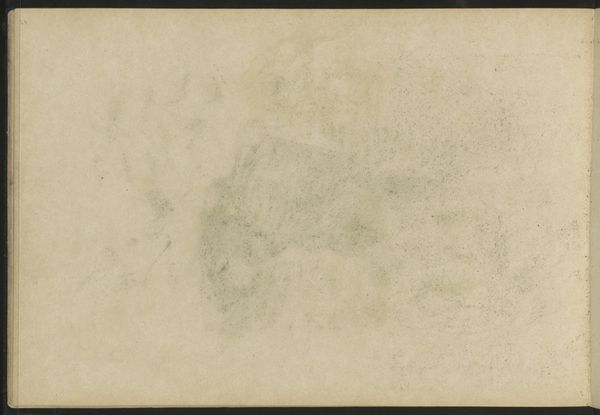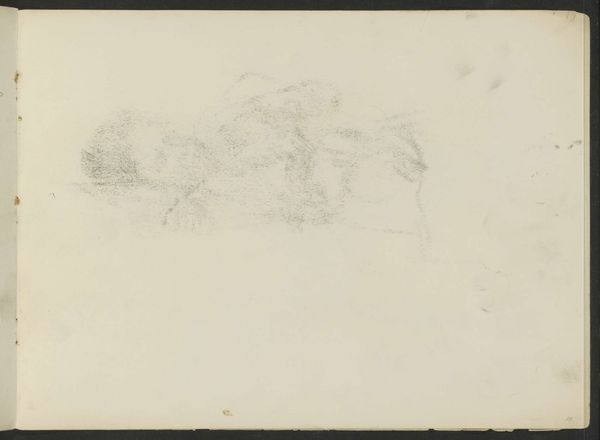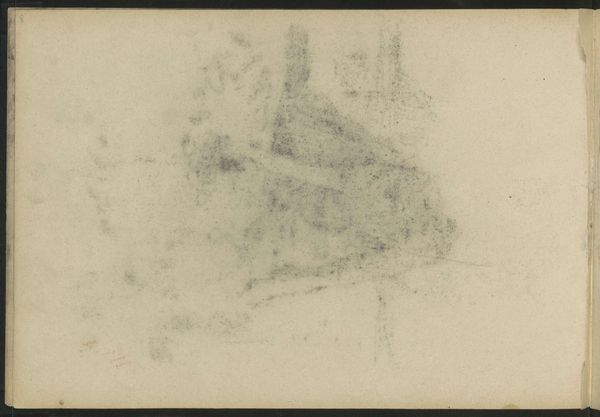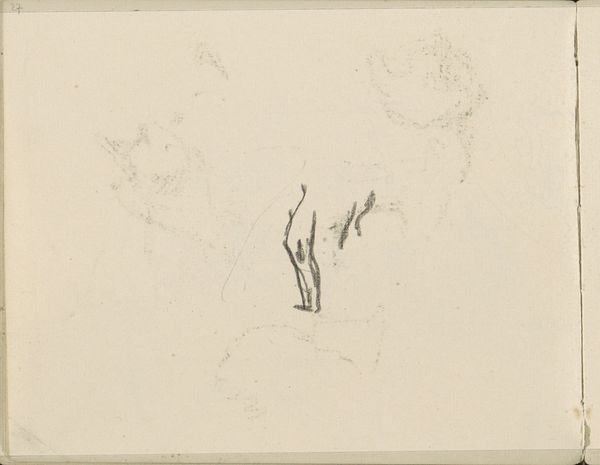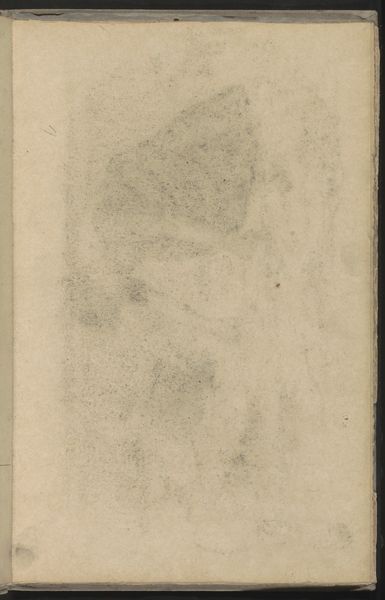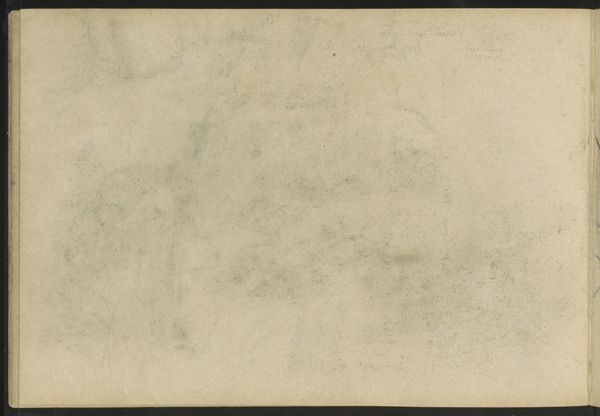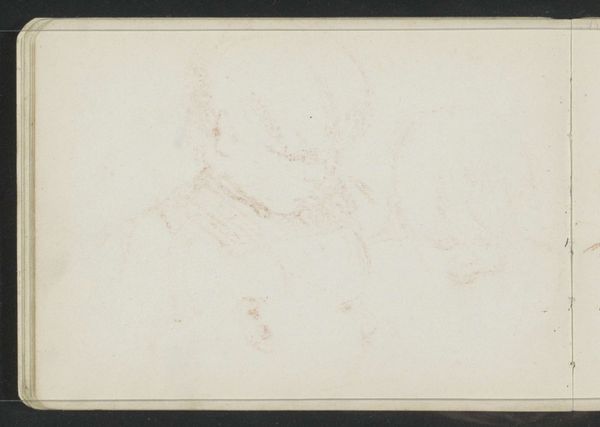
drawing, paper, pencil, graphite
#
drawing
#
impressionism
#
landscape
#
paper
#
form
#
pencil
#
abstraction
#
line
#
graphite
Copyright: Rijks Museum: Open Domain
Editor: So, here we have Willem Witsen's "Abklatsch van de krijttekening op pagina 53," a graphite and pencil drawing on paper from around 1884 to 1887. It's... really faint. Almost ghostly. The lines are soft, suggestive, hinting at a landscape, maybe? What do you see in this piece? Curator: The ephemerality is key, I think. Note how Witsen employs the "Abklatsch"—the rubbing or transfer—process itself. What does this reproductive technique, with its inherent loss of detail and delicacy of form, suggest to you? Think about the impressionistic period and its focus. Editor: Well, it feels very much in line with Impressionism, focusing on capturing fleeting moments and impressions of light and atmosphere rather than sharp detail. It's like a memory fading. Curator: Precisely. But what memories? Landscape carries immense cultural weight. We ascribe narratives, emotional significance. Consider the period in which this was created. Industrialisation was advancing, landscapes were dramatically being reshaped, urban environments becoming crowded, and technology was changing art practices. Editor: So, this blurred, fading landscape…it’s a commentary on loss? Loss of the rural idyll? A response to change? Curator: Potentially. And the "Abklatsch" becomes significant: a shadow of a memory. How does that inform your reading of its aesthetic quality now, thinking about it as the reproduction of an image, twice removed from an original source and reflecting these cultural tensions? Editor: It makes it much more powerful, and self-aware. It's not just a landscape, but a statement on memory and the changing world. I appreciate that it evokes feelings of melancholy and nostalgia. Curator: Indeed. A potent piece about the enduring power and fragility of images and how we imbue landscapes with narrative meaning through our cultural experiences.
Comments
No comments
Be the first to comment and join the conversation on the ultimate creative platform.

